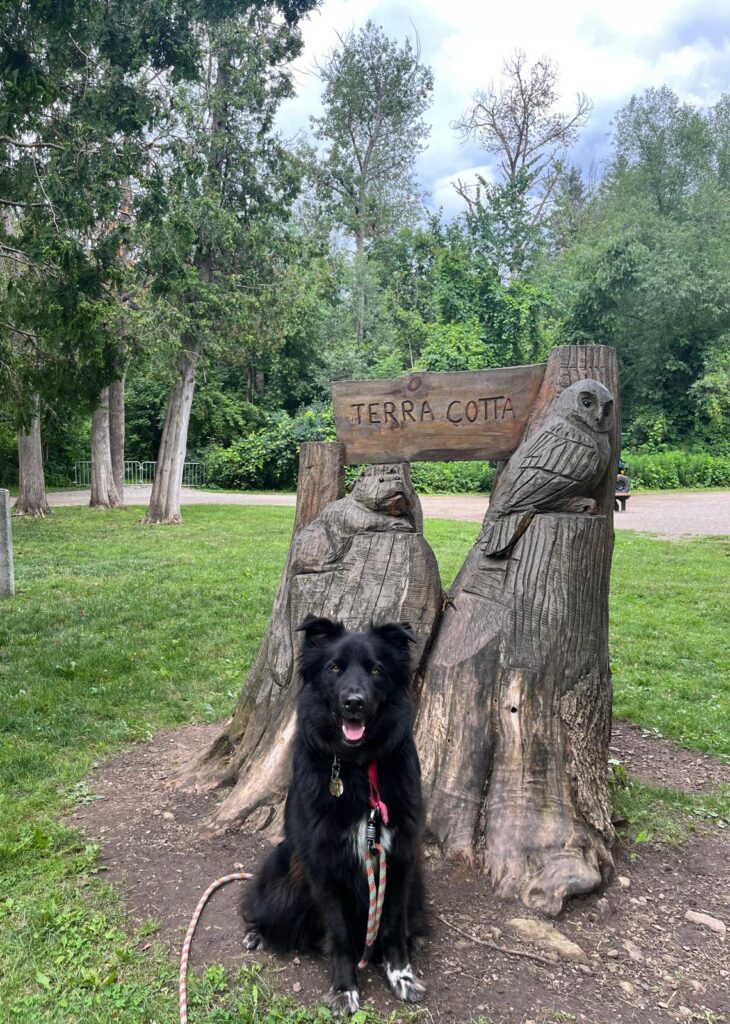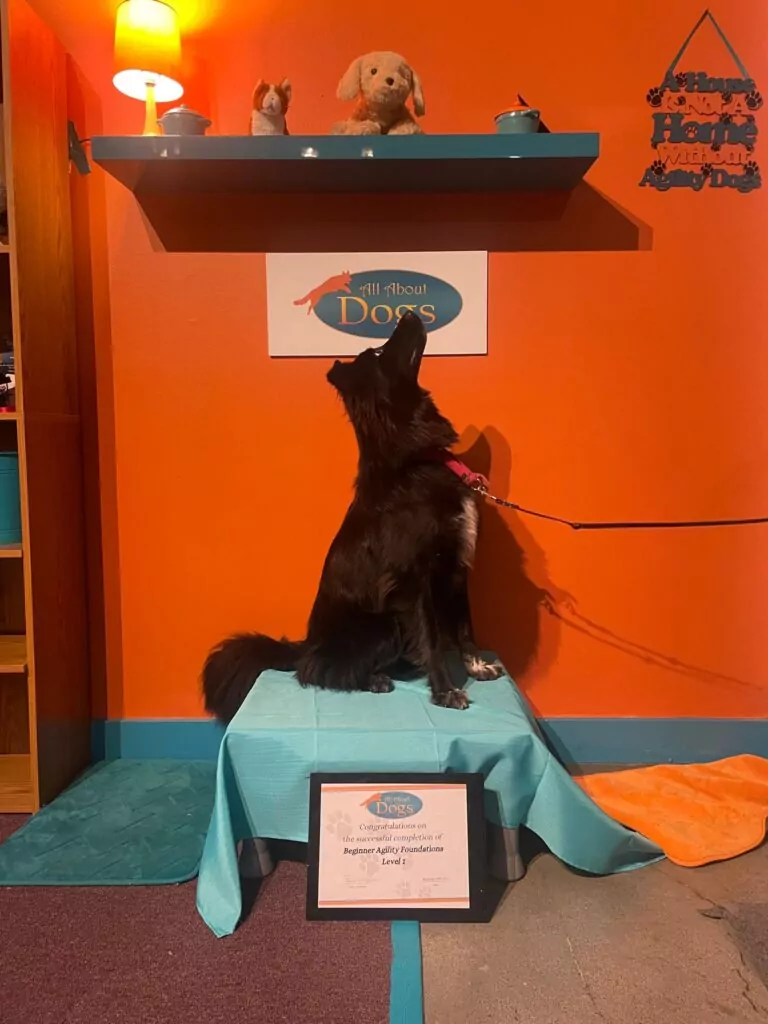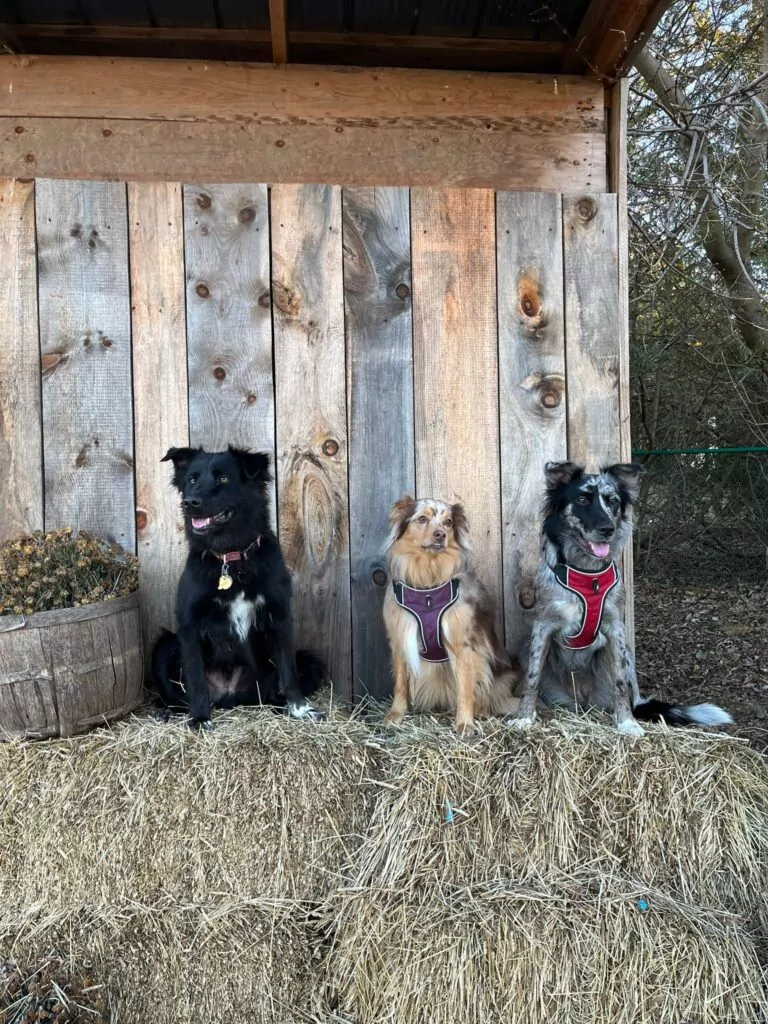Our clients Tina and her partner were first-time dog owners. Their dog was a spitfire Aussie-Border Collie cross. They lived in a busy condo building downtown. Their trainers were old-school and heavy handed.
What could possibly go wrong?
When our clients Tina and her partner, a dynamic professional millennial couple, went looking for their new canine companion, they sought an active and intelligent dog who could share their life in the city and beyond. Soon after, they brought home puppy Fred and promptly sought training for their new addition.
They were referred to a training school that used so-called “balanced” training – meaning approaches combining positive reinforcement with corrective methods that emphasized obedience, tools of control, corrections, and the rigid, almost militaristic, handling of dogs. For example, when out on their walks, Fred was kept on a tight leash. He was asked to heel and was not allowed to use his nose and smell things. He had to be hand-fed his meals on grounds that this would prevent food aggression from developing.
When it was time for Fred’s course evaluation, he “failed” repeatedly because he could not stay still for 10 minutes straight as part of his examination. Tina was told that she was partly to blame for his poor manners and that she had to “firm up” her stance with Fred.
In addition to these “lessons” learned in class, Tina and her partner took to heart the message in the mainstream training that dogs need to be “socialized” as intensely as possible. So as soon as they brought Fred home, they had him meet dogs and people in their building and beyond. A profoundly smart and sensitive dog, Fred did not take well to the rigid handling in training school and the excess socialization at home. His behavior began to deteriorate and he became extremely reactive to dogs and at times to people, and often redirected on his owners during these reactive episodes. Luckily, rather than trying to push forward, my clients could tell something was amiss, backed off their current training, and sought our help.
Our early conversations gave our clients hope but also challenged them in thinking differently. The messages that dogs can only behave if trained and can only be polite if socialized were hard to let go of, but Tina and her partner could see the problems that these ideas created.
We went to work applying the Way of Life Method to Fred and his family. He was put on a schedule including satisfying physical and mental exercise, crating, solo time, and a little mat time in the evening. The hand-feeding stopped and he was fed in the privacy of his crate. His humans backed off commanding him at every turn, letting him think instead. They could not believe that Fred was capable of walking on a loose leash without being asked to heel. They used the hallways, garage, and stairwells of the building to play games that built Fred’s confidence, restored his capacity to think for himself, and minimized the risk of reactive moments. They navigated the busy elevators patiently, waiting to have this space all to themselves before riding with Fred.
Soon enough, they started to see hope and regained optimism in a life with Fred. Realizing how much steadier he had become, Tina realized how much drive and talent he had under the hood and signed him in agility, brought him to our group classes, and expanded his social world slowly but surely. They visited family and friends together and took hikes in new places, Tina carving out the time for him despite her busy and stressful schedule as a doctoral student.
Much as seeing a dog blossom makes us happy, what brings us even greater joy is seeing our human clients transform. Fred changed Tina as much as Tina changed Fred – in their struggle, they grew and found each other anew.



